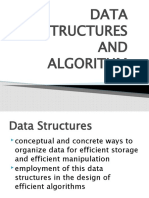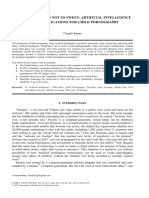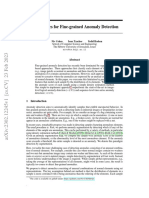0% found this document useful (0 votes)
91 views43 pagesDesign and Analysis of Algorithms
This document introduces the course "Design and Analysis of Algorithms" and discusses the importance of algorithms and data structures. It explains that algorithms are sets of instructions to perform tasks and discusses different types of problems that algorithms can help solve, from simple problems with straightforward solutions to more complex problems that require optimization. The document also outlines what will be covered in the course, including analysis of specific algorithm problems like calculating Fibonacci numbers and greatest common divisors.
Uploaded by
awaisabbas47Copyright
© © All Rights Reserved
We take content rights seriously. If you suspect this is your content, claim it here.
Available Formats
Download as PDF, TXT or read online on Scribd
0% found this document useful (0 votes)
91 views43 pagesDesign and Analysis of Algorithms
This document introduces the course "Design and Analysis of Algorithms" and discusses the importance of algorithms and data structures. It explains that algorithms are sets of instructions to perform tasks and discusses different types of problems that algorithms can help solve, from simple problems with straightforward solutions to more complex problems that require optimization. The document also outlines what will be covered in the course, including analysis of specific algorithm problems like calculating Fibonacci numbers and greatest common divisors.
Uploaded by
awaisabbas47Copyright
© © All Rights Reserved
We take content rights seriously. If you suspect this is your content, claim it here.
Available Formats
Download as PDF, TXT or read online on Scribd
/ 43























































































